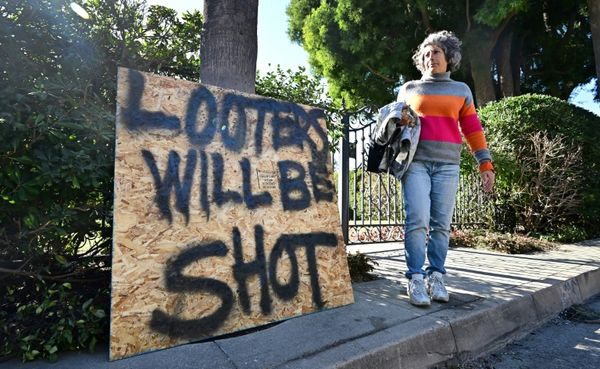
The postcode was an exclusive area of London and the four-storey, period building was something an estate agent might describe as “magnificent” and “imposing”. A man escorted me to a side door in near darkness. The door opened and as soon as I was in, it closed quickly behind me.
The inside of the property was vast, but there was barely any furniture and the walls and high ceilings had been graffitied. The inhabitants were initially suspicious of me, but seemed friendly enough. I had imagined them to be more disorderly, but instead some were busy with cordless drills, trying to make the cold, once palatial property more habitable.
There are now 1.5m vacant properties lying idle across England and Wales. At the same time at least 271,000 people are recorded as homeless in England alone, from those sleeping on streets or sofa-surfing to others living in unsuitable and even dangerous temporary accommodation. It is no coincidence, then, that a leading squatters’ welfare group has seen a rise in squatting for the first time in a generation.
In the communal kitchen, well stocked with bags of rice and dried pasta but little else, I spoke to Ryan (not his real name), a young photographer who had recently turned to squatting. He told me that his income was so low and irregular that if he wanted to stay in London he had two options: squatting or living on the street. He was fully aware that illegally occupying someone else’s property could land him in prison for six months. His housemates were not all creatives but they were just as hard up as him, some having previously lived in tents pitched on pavements.
Their story is a familiar one to the Advisory Service for Squatters, an east London-based group that has been giving advice to squatters and homeless people since 1975. The service acknowledges that “the numbers of squats and squatters definitely fell significantly” after the criminalisation of squatting in residential properties in 2012. However, it has also said that “since the pandemic we have definitely had more contact from people considering squatting, and there seem to be significantly more squats around. This seems to be partly due to other options becoming more unaffordable and insecure.”
There is little doubt that hikes in rent have made housing less affordable, particularly during a cost of living crisis. But at the same time, a recent report published by the Office for National Statistics found that there are now more than 1.4m “truly vacant” dwellings in England and Wales. It is estimated that even if a fifth of these were made habitable, it would be enough to solve the homelessness crisis at a stroke.
The idea of vacant properties being used for something useful is popular with the public. Even Boris Johnson, when he was mayor of London, acknowledged that the capital had a problem with empty properties and was not surprised they were squatted. A 2022 opinion poll found 65% of respondents supported councils being given the powers to acquire long-term empty properties at below-market value for use as social housing. Such a policy has been implemented in Barcelona.
The real obstacle to freeing up empty properties in the UK seems to be government inaction. The Conservatives would counter this, citing a drop in the number of empty properties thanks to their interventions. But campaigners argue that there are many more empty properties in England than the government’s statisticians are counting.
At the end of the second world war, the UK’s chronic housing shortage led to an unlikely act of civil disobedience. Dubbed the “respectable uprising”, desperate young families who had been bombed out of their homes walked into the many empty military sites around the country and laid claim to accommodation huts. From big cities such as Bristol to villages such as Chalfont St Giles in Buckinghamshire, tens of thousands of hut occupiers organised themselves into committees and pooled resources.
From the late 1960s to the 80s, squats flourished as vacant inner-city areas drew in artists and punks embracing communal living and activism. In 1977, squatters on Freston Road in London’s Notting Hill, who lived in a clump of mainly condemned houses, received global attention when they declared independence from the British state, even going so far as creating their own postage stamps and passport stamps for visitors. Eventually, the squats were demolished by the Conservative-led Greater London Council – but the residents of Frestonia were given safe, livable homes in the redevelopment as a result of their activism.
In the last few decades, exorbitant rents have made squatting a reality for some younger people; there is even anecdotal evidence now of students in debt squatting alongside migrant workers on low incomes. A new mass movement of squatters in the UK seems unlikely, but with homelessness on the rise and so many empty properties, it is unsurprising that there is an increase in squatting. The rising cost of living, soaring rents and destitution, combined with a wider housing shortage, will probably make squatting something people turn to in increasing numbers.
As for Ryan, the last I heard he had been tipped off that he and his housemates might be evicted from their squat, probably leaving him back on the streets – just as the winter starts to bite.
Jason Rodrigues is a researcher and writer in the Guardian’s research department







